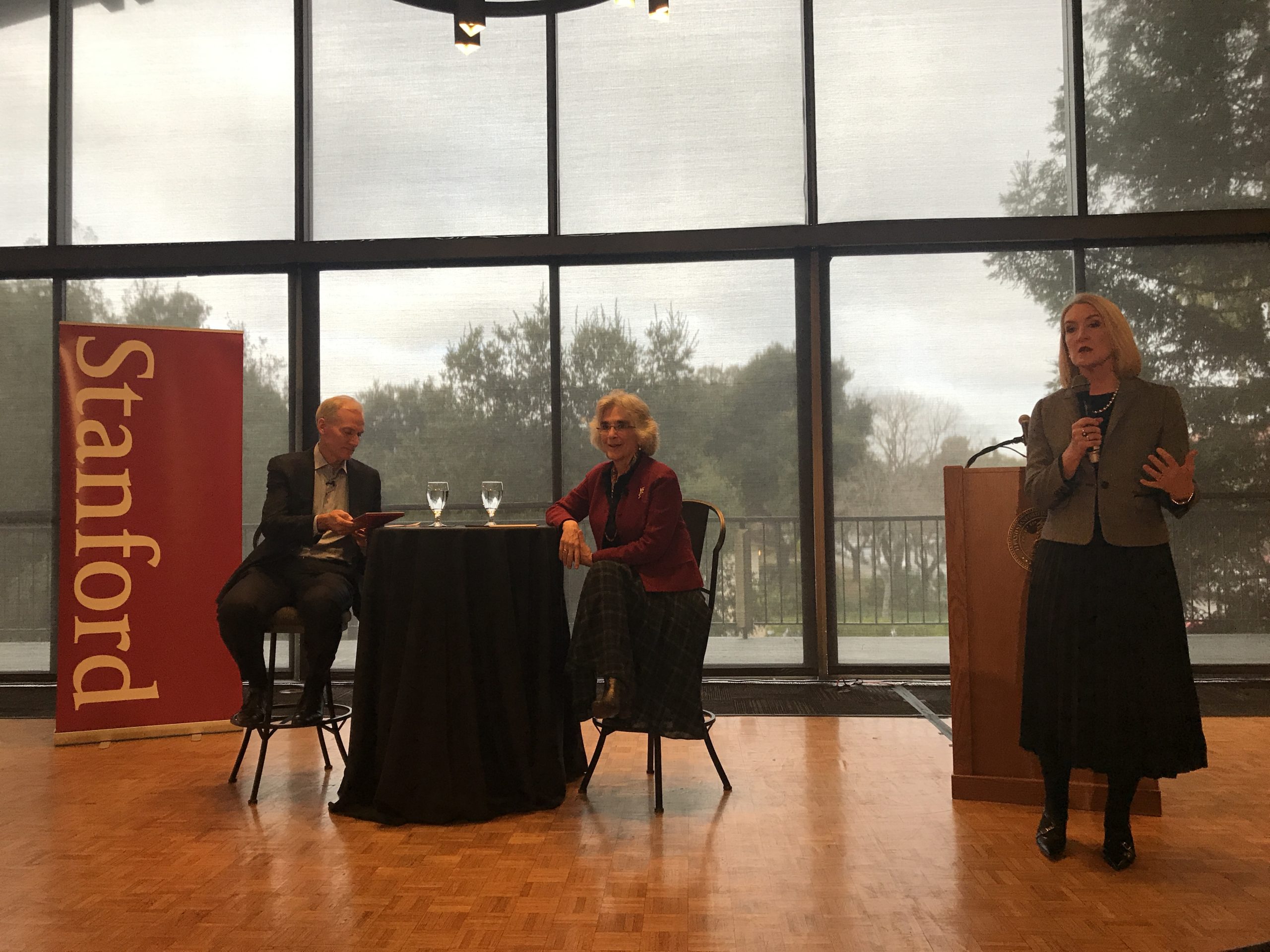University President Marc Tessier-Lavigne and Provost Persis Drell addressed a report of potential anti-Semitism and fears around coronavirus at a town hall event attended largely by faculty and staff on Thursday.
The two administrators, joined by Vice President for Human Resources Elizabeth Zacharias and Associate Vice Provost for Campus Engagement Matthew Tiews, also offered a preview of next year’s budget and the future of campus development in the wake of the withdrawal of Stanford’s General Use Permit (GUP) application.
Potential anti-Semitism reported
A dead rat on top of what appeared to be a graffitied Star of David, among other symbols, on Palm Drive was reported Wednesday evening to the Stanford Department of Public Safety.
In Thursday’s conversation, Tessier-Lavigne addressed the incident in general terms, steering clear of explicitly labeling it an instance of anti-Semitism: “It contained symbols that are unclear in intention but could be taken as being anti-Semitic in nature,” he said, adding that “it is unclear whether this is directed at a particular group.”
Stanford police are investigating the situation, and the University has reached out to the Office for Religious Life as well.
“I want to be clear,” Tessier-Lavigne said. “Any crude symbol that can be taken as or can be assumed to be an expression of anti-Semitism is not welcome on our campus. We stand against anti-Semitism and all expressions of hatred against others.”
University addresses coronavirus concerns
The town hall’s first audience question echoed concerns around coronavirus raised last night at the president and provost’s conversation with students in Branner Dining.
This morning, the World Health Organization declared the virus a global health emergency. Originating in Wuhan, China, the virus has affected more than 9,700 individuals worldwide and has taken the lives of over 213 people, according to CNN coverage. In the U.S., six have been diagnosed with the virus, with the most recent case being spread from person-to-person contact on American soil.
In response, Tessier-Lavigne reiterated that a University task force continues to meet every day to monitor the situation and prepare for a potential outbreak on campus, but that Stanford is working not to create panic on campus.
Budget to prioritize affordability task force recommendations
The University budget for the upcoming fiscal year will prioritize implementing the reforms of the affordability task force, Drell said, despite a tight year for funding overall.
Drell added that limited central funding will not impact faculty and staff salary increases, although schools and departments that typically rely on central funding to finance those increases will be asked to fund them internally instead.
“Investing in our people has to be a key priority for the University,” she said.
The affordability task force’s recommendations are due to be released “in the coming weeks” once they have been finalized, according to Zacharias.
University to focus on ‘GUP-neutral’ development
Last November, Stanford withdrew its GUP application, marking the end of years of fighting for the approval to add 2.275 million square feet of academic buildings and 3,150 additional affordable housing units to Stanford-owned land.
Without the ability to add new square footage, the University will focus instead on “GUP-neutral” development, Drell said. Stanford can tear down and replace buildings as long as the total amount of square footage does not change.
“What we’re doing is actually doing a census of all of the space on campus,” Tessier-Lavigne said. “This is an opportunity for us to make sure we’re using the space that we already have as best as we can. We think it’s actually the right thing to do from a sustainability perspective.”
Stanford is also moving ahead with plans to redesign White Plaza. The University is working with an architectural firm to conceptualize a framework for the new layout and expects to have some options by spring quarter, Tiews said.
“We do see the town center as a hub that also connects to both the ResX projects and the rethinking of the undergraduate experience and the residential life, but also other work around campus to engage our community and bring people together,” he said. “It’s a place where we can really bring staff, faculty, postdocs, students — undergraduate and graduate — all together.”
Contact Erin Woo at erinkwoo ‘at’ stanford.edu.
